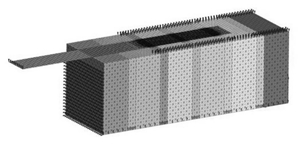A review on the bond behavior of FRP composites applied on masonry substrates
DOI:
https://doi.org/10.21809/rilemtechlett.2017.40Keywords:
FRP, masonry, bond, numerical analyses, experimental testAbstract
The need of repairing and retrofitting masonry buildings, typical of Italian and European built heritage, determined a growing interest towards the development of effective and cost efficient innovative strengthening solutions. Among the different techniques currently available, the adoption of composite materials, such as Fiber Reinforced Polymers (FRPs), proved to be one of the most viable solutions for the strengthening of masonry structures. If not properly fixed, a common failure mode of this system is the early debonding of the reinforcement from the substrate. For this reason, several experimental tests and numerical analyses are currently available in the literature, clarifying and predicting the bond behavior of FRP glued to masonry substrates. The purpose of this paper is to provide an overview of the results obtained by the different experimental works, of the numerical analyses performed both for evaluating and validating experimental results and of the simplified analytical models currently available for the prediction of the maximum capacity of the strengthening systems. Results of extended experimental campaigns, carried out also within different Round Robin Test (RRT) series, with several laboratories involved, and recent model calibrations will be discussed together with the approach proposed by the actual guidelines.

Downloads
Published
How to Cite
Issue
Section
License
Authors retain copyright of the articles published in RILEM Technical Letters and grant the journal the right of first publication with open access. The work is simultaneously licensed under Creative Commons Attribution 4.0 International License (CC BY 4.0) that allows others to share and adapt the work under the following terms: 1) a proper attribution is given in a form of bibliographic record with the DOI link directing to RILEM Technical Letters; 2) a link to the license is provided; 3) the changes (if any) are indicated.









